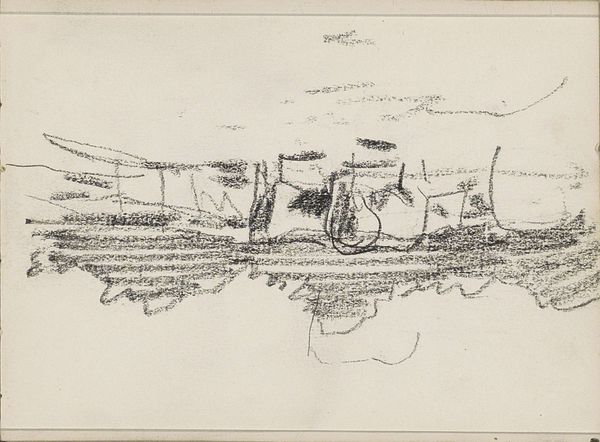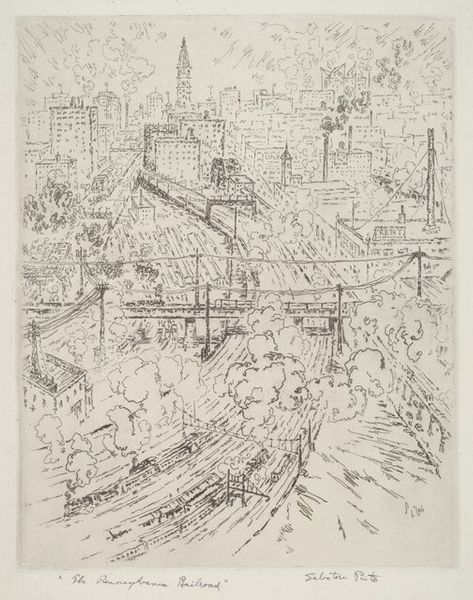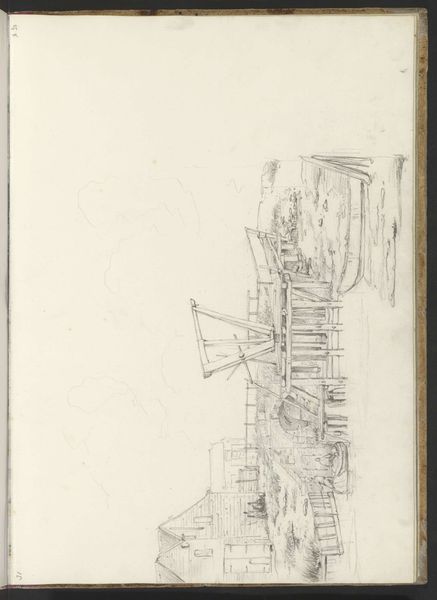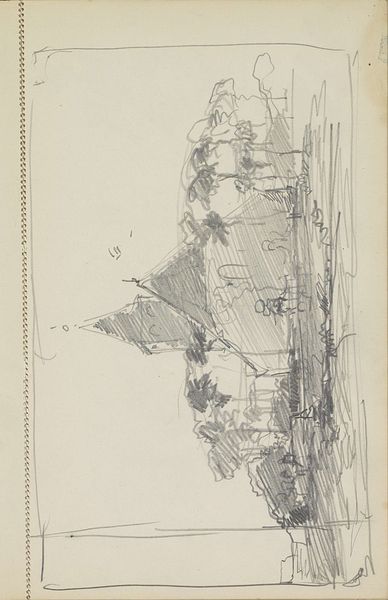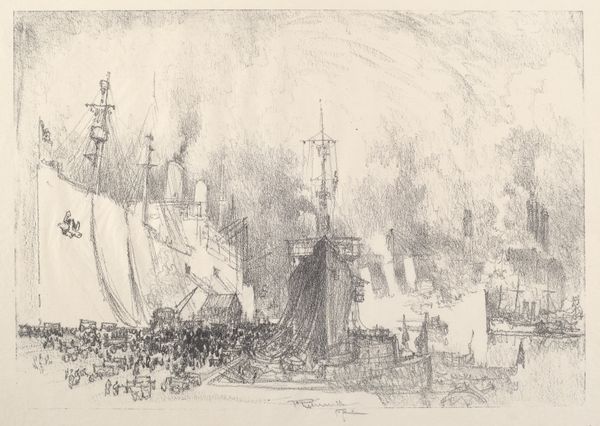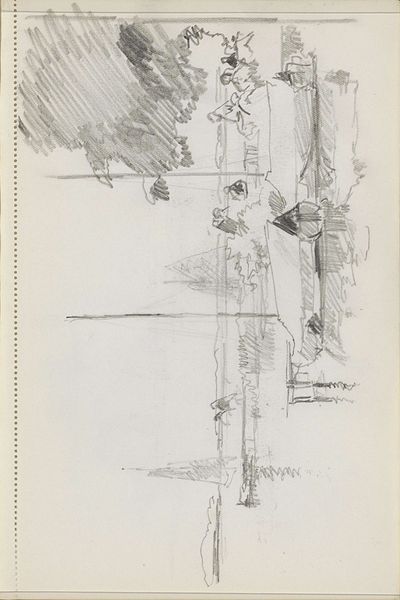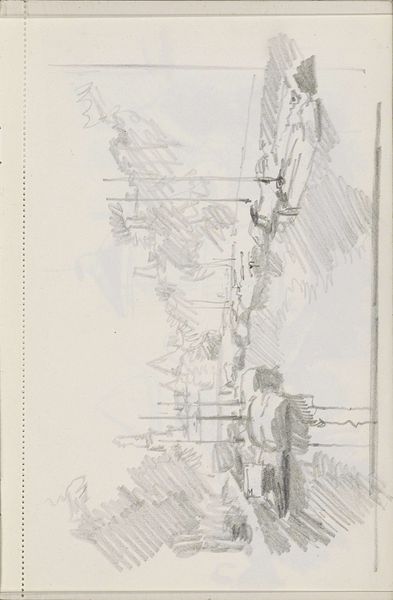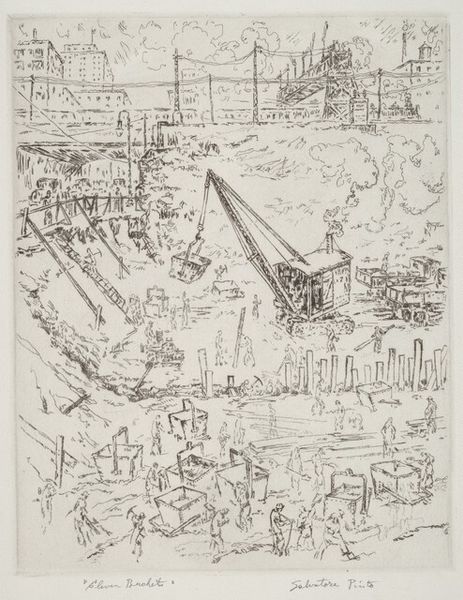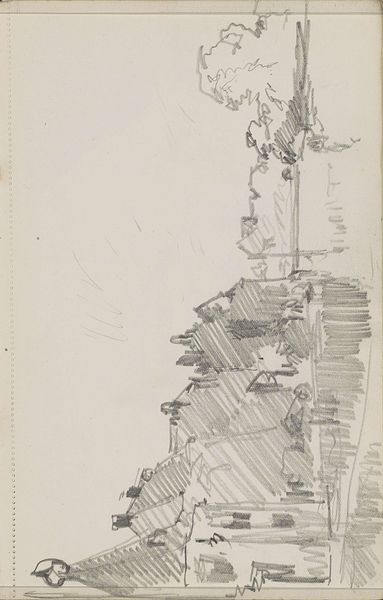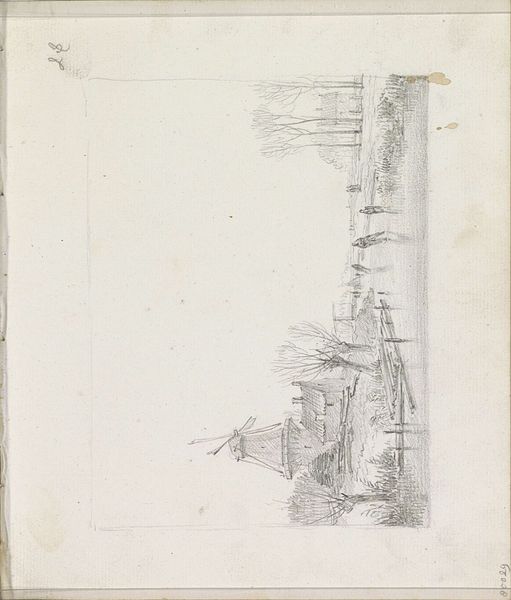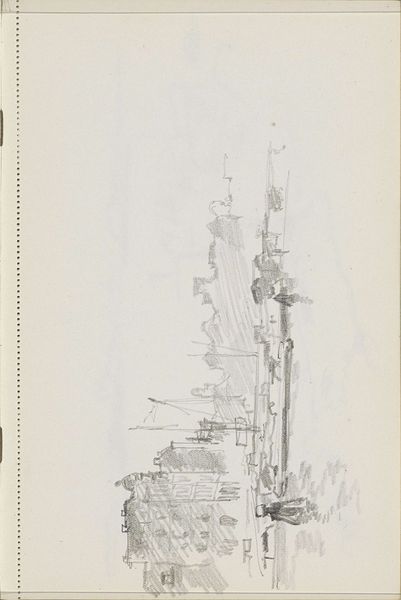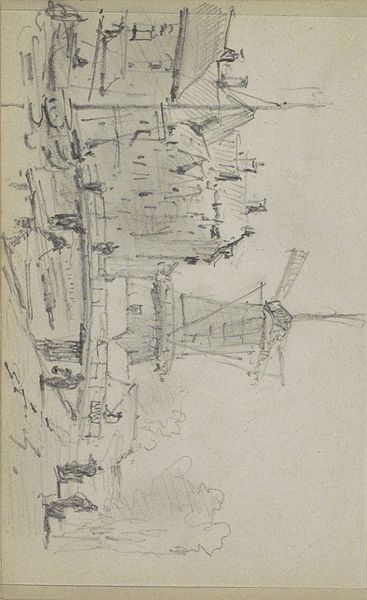
drawing, print, pencil, pen
#
drawing
# print
#
pen sketch
#
pencil sketch
#
geometric
#
pencil
#
pen
#
cityscape
Copyright: National Gallery of Art: CC0 1.0
Curator: "The Ants," drawn in 1917 by Joseph Pennell using pen and pencil. It's fascinating, isn't it? How the materials, so simple – paper, pencil, ink – can depict something so complex and monumental. Editor: Absolutely! It feels like an incredibly detailed technical drawing, but with an almost frantic energy to it. There's such a swarm of tiny figures, really like ants, all over this massive warship. What can you tell us about it? Curator: Notice how Pennell renders the battleship not as a symbol of military might, but as a site of intense labor. Look closely at the tiny figures, the workers, constructing, repairing, maintaining this behemoth. It shifts the focus away from abstract ideas of warfare to the tangible reality of its making. Editor: So, you're saying the drawing highlights the workers instead of the ship itself? Curator: Precisely! Consider the context. 1917, World War I. Pennell is presenting not glory, but the immense, largely invisible human effort required to fuel the war machine. What labor went into the war effort, what resources, what scale of labor? It is a great consumer, this ship. The print medium makes the image reproducible, to be circulated and consumed by a broad audience. Editor: That's a really different perspective than I expected. I initially just saw the ship. Curator: Many do. What this artwork underscores is not just seeing, but examining. Considering the often-overlooked processes that bring objects and ideologies to life. It's about the unseen workers as a mass of ants. Does seeing the artwork this way change your perspective at all? Editor: Definitely! I'll never look at another image of a warship the same way. Thinking about the labor is incredibly powerful. Thanks! Curator: My pleasure. Looking beyond the surface reveals so much.
Comments
No comments
Be the first to comment and join the conversation on the ultimate creative platform.
